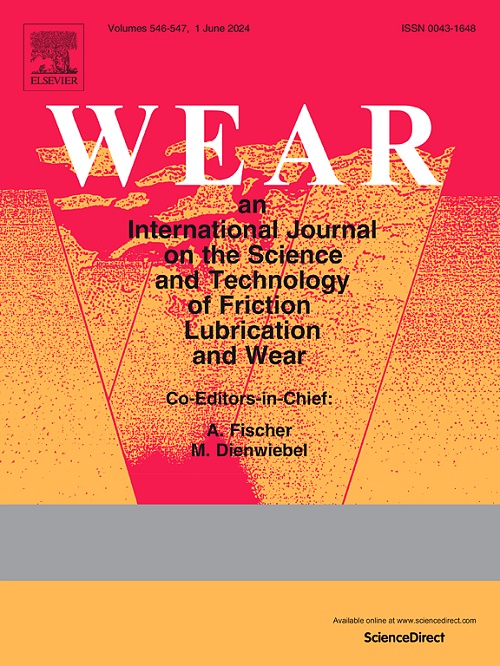Tribological behavior of polypropylene-based composites reinforced with cherry seed powder under lubrication conditions
IF 5.3
1区 工程技术
Q1 ENGINEERING, MECHANICAL
引用次数: 0
Abstract
The article presents the effect of cherry seed powder (CSP) addition to the polypropylene (PP) matrix on tribological properties: coefficient of friction (COF) and wear under lubrication conditions using paraffin and silicone oil. The composites differed in the percentage content of the filler (5, 10, 15 wt%) and the size of CSP particles (<400 μm, 400–630 μm, 630–800 μm). 30-minute friction tests were conducted using the “block-on-ring” system, and the wear mechanisms were identified based on SEM analysis supplemented with topographic analysis. To fully interpret the results, mechanical tests of the obtained composites were also performed and a viscosity-temperature analysis of the oils used was performed. In both the case of paraffin and silicone oil, it was observed that adding CSP to the polymer matrix reduces the COF. Paraffin oil tends to reduce the COF by increasing the percentage of filler (regardless of particle size). In contrast, silicone oil has the lowest COF observed in the case of 5 % wt. and the highest granulation. The dominant wear mechanism in the case of paraffin oil lubrication turned out to be micro-abrasion, while in the case of silicone oil, micro-abrasion and micro-adhesion. Moreover, it seems that the lower dynamic viscosity of silicone oil at lower temperatures favored the destructive effect of crushed filler particles on the composite surfaces in the initial parts of the tests.
求助全文
约1分钟内获得全文
求助全文
来源期刊

Wear
工程技术-材料科学:综合
CiteScore
8.80
自引率
8.00%
发文量
280
审稿时长
47 days
期刊介绍:
Wear journal is dedicated to the advancement of basic and applied knowledge concerning the nature of wear of materials. Broadly, topics of interest range from development of fundamental understanding of the mechanisms of wear to innovative solutions to practical engineering problems. Authors of experimental studies are expected to comment on the repeatability of the data, and whenever possible, conduct multiple measurements under similar testing conditions. Further, Wear embraces the highest standards of professional ethics, and the detection of matching content, either in written or graphical form, from other publications by the current authors or by others, may result in rejection.
 求助内容:
求助内容: 应助结果提醒方式:
应助结果提醒方式:


